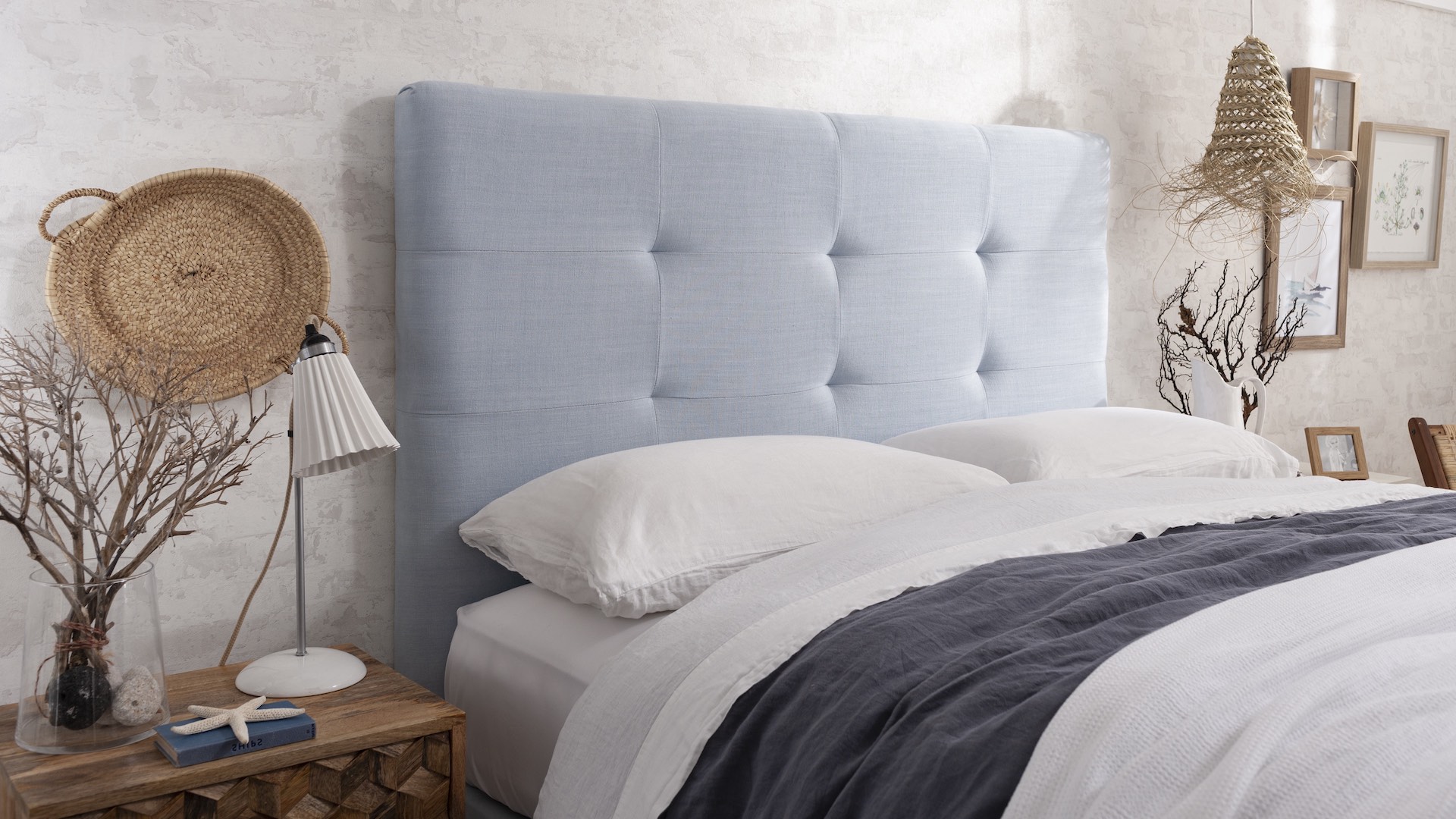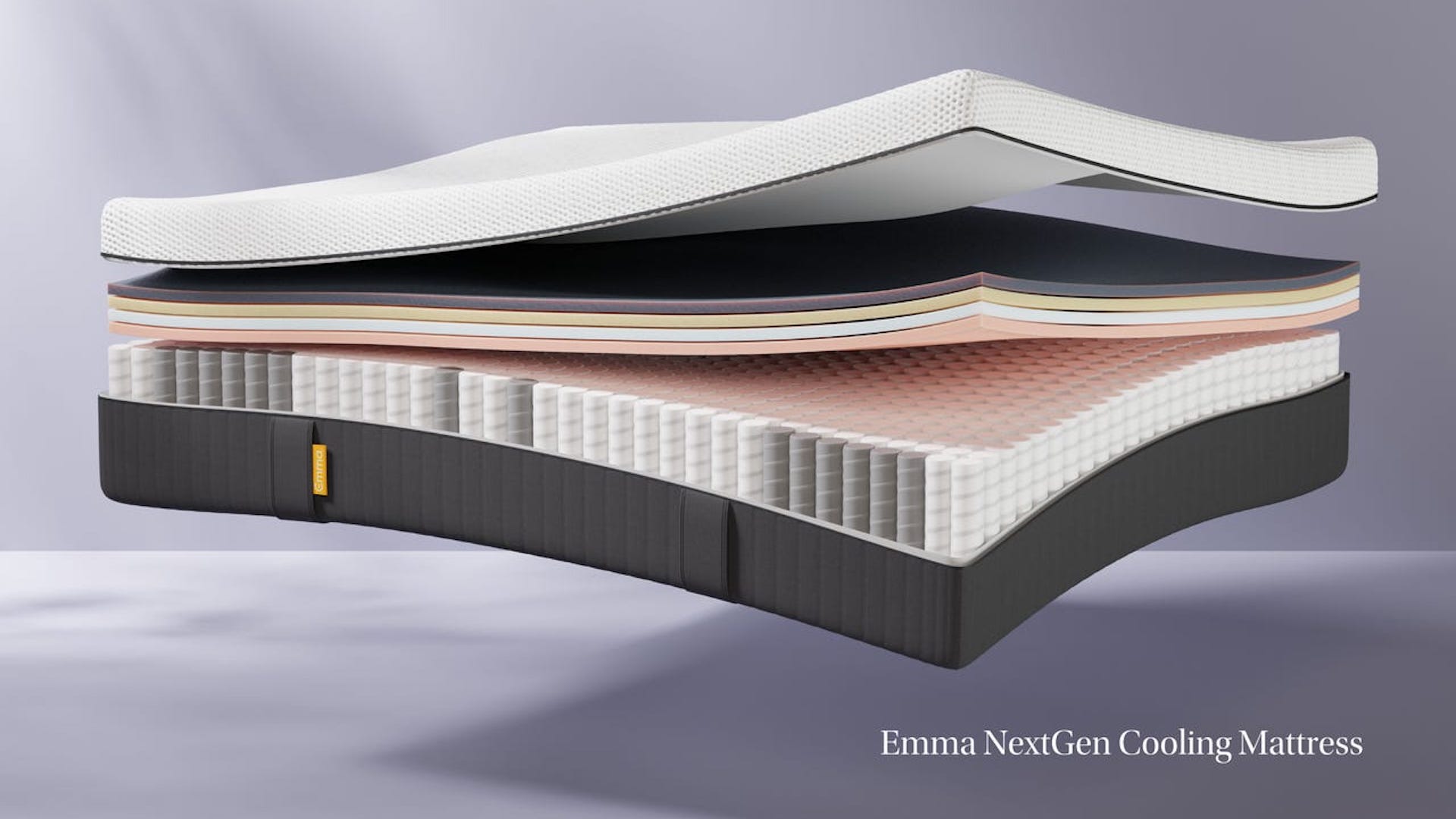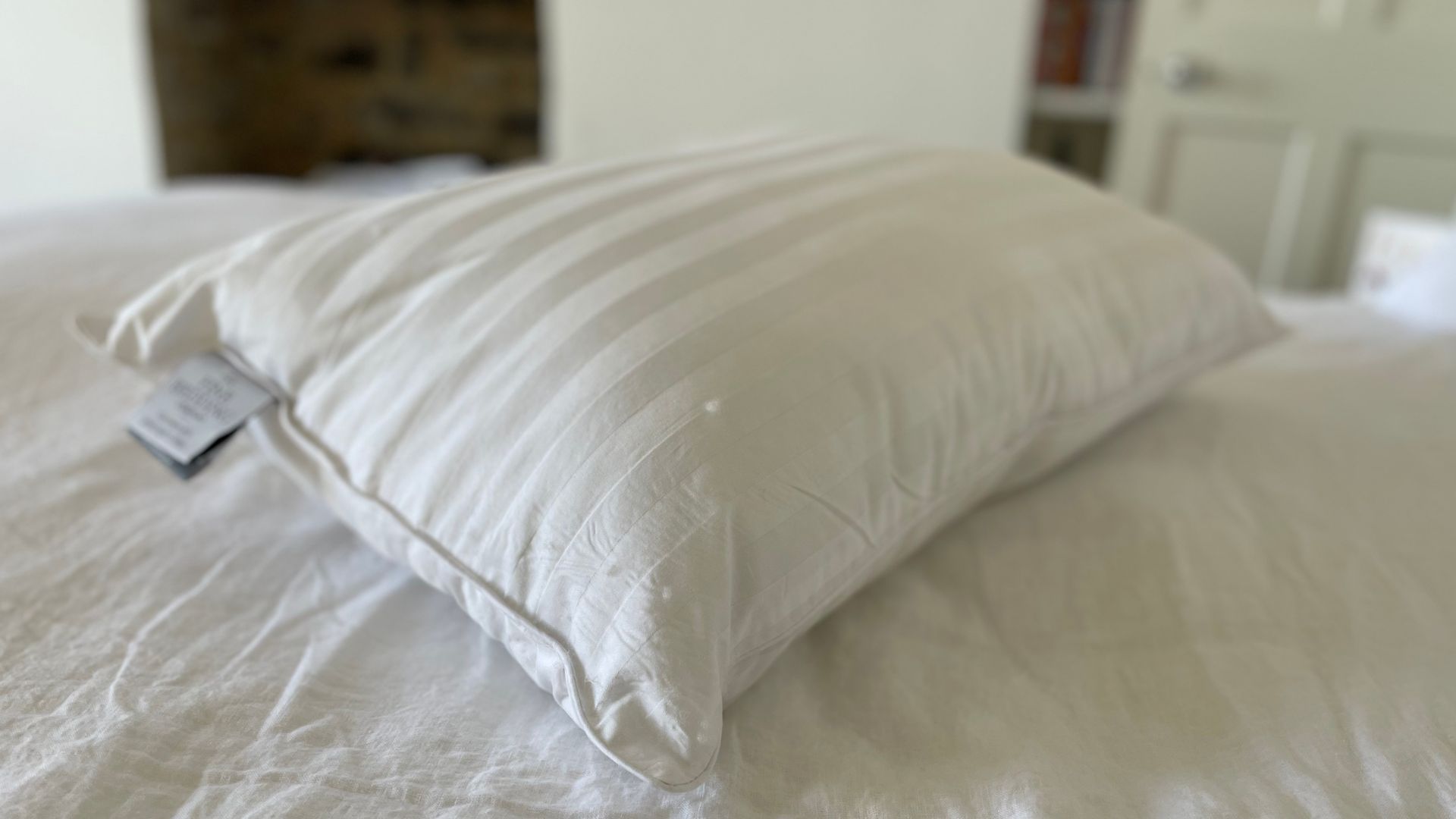Do cooling mattresses really help stop overheating and night sweats? Experts reveal the truth
You’ve heard the hype about cooling mattresses, now find out if they’re the hot buy you need to enjoy sweat-free sleep


With the promise of sunshine on the horizon, now is the perfect time to tackle overnight overheating so you’re good and ready before the temperatures rise. Preparing your bedroom now can help you stay cucumber cool throughout no matter what the summer brings.
If you regularly struggle to fall asleep and stay asleep, overheating could well be the issue. “People often underestimate how much the temperature of their sleep environments can impact sleep,” explains Theresa Schnorbach, Sleep Expert at Emma. “If we are too warm, our core temperature is unable to drop, making it more difficult to fall asleep and causing sleep disturbances.”
Perhaps you have health-based reasons for waking at 3 am in a sticky mess, are a naturally hot sleeper or maybe your home is just unusually warm. Whatever the reason, investing in one of the best cooling mattresses has probably crossed your mind.
But are cooling mattresses worth it? And, more importantly, do cooling mattresses really work to aid when looking at how to sleep better or are they mere money-making gimmicks? We asked the experts targeted questions to find out.
What are cooling mattresses?
Cooling mattresses refers to any mattress designed especially to help your body regulate heat better. They generally feature materials and construction techniques aimed at moving excess heat away from your body to allow you to sleep at a more consistent temperature.
In truth, most modern best mattresses are designed with cooling in mind, primarily because any mattress that makes you unbearably hot and sticky will not be a best seller. Popular solutions include air vents, waffle-style weaves and natural materials – particularly on the top layer, closest to your skin.
However, when most people talk about cooling mattresses, they generally mean those with advanced cooling features that have been specifically engineered to promote perfect temperature control and heat reduction, commonly through the use of innovative synthetics, technical textiles and aerated construction.
Sign up for the woman&home newsletter
Sign up to our free daily email for the latest royal and entertainment news, interesting opinion, expert advice on styling and beauty trends, and no-nonsense guides to the health and wellness questions you want answered.
We’ll also explore the case for naturally cooling mattresses (not foam), as well as other factors that can help if you suffer from more serious issues, for example, night sweats for menopausal women.

Emma’s Sleep Expert Theresa Schnorbach is a psychologist and sleep scientist, specialising in Clinical Psychology and Cognitive Neuropsychology. She has post-graduate training in Cognitive Behavioural Therapy for Insomnia (CBT-I) with the German Sleep Society, endorsed by the European Research Society.
How do cooling mattresses work?
There are various ways cooling mattresses can target heat control, and most include more than one method to improve the chances of success. Here are some of the common terms you may come across when trying to figure out whether cooling mattresses work:
- Cool-touch fabrics: Cool-to-touch covers are very popular, especially on foam mattresses. As you’ve probably guessed, when you first touch them, they feel cool! This is thanks to special materials woven into the cover, often a technical mix of polyester and polyethylene, which absorbs heat and draws it away from the body. A.k.a moisture wicking. While this cool-touch element does work when you first lay down, it doesn’t stay cool for more than a couple of minutes. It is also less effective if your bedroom is already hot, for example during hot summer months.
- Gel and graphite infusions: Copper, graphite and gel infusions are also commonly featured in memory foam mattresses and were designed to solve early issues with foam-induced sweatiness by making solid foam more breathable and thus able to draw heat away from your body. They are often given trademarked or patented names. For example, Emma’s ThermoSync foam and Simba’s Simbatex foam are both infused with graphite particles, Casper’s Snow cooling mattress favours cooling gel-infused foam, while Layla is all about the copper-infused memory foam. It's difficult to say which is best but all you need to know is that, without at least one of them, you’ll wake up stuck to your sheets!
- Enhanced airflow: Airflow is perhaps one of the most important elements of any mattress because you can’t draw heat away from the body if it has nowhere to go. “For a cooler night’s sleep you want to opt for a mattress with a layer of springs as this will help to ensure increased air circulation which, in turn, keeps you cool,” advises Emma’s Sleep Expert, Theresa Schnorbach. On a similar note, open-cell foam is always going to offer better cooling powers than traditional closed-cell foam, as the former promotes airflow and the latter blocks it.

- Phase Change Materials: One of the latest buzz terms in the world of cooling mattresses is Phase Change Materials, and several brands are adopting the tech, including Tempur and Nectar. Originally developed for NASA, this material uses natural wax and the laws of physics to absorb body heat and store and release that heat back to you once the body cools off. It promises to start working before you get hot, so there’s less of a battle with sweat, as well as the temperature stability needed to help you stay soundly asleep all night.
- Water cooling tech: If you’re in seriously sweaty territory, you might prefer a water-based cooling mattress topper, such as a Chilipad or Eight Sleep Pod, which pipes cooled (or heated) water underneath you (like an electric blanket but with small pipes instead of cables) and can be controlled using an App. They are expensive and can prove too noisy for light sleepers, but of all the cooling methods out, they’re arguably the only one that physically cools the body throughout the night rather than just removing body heat.
Do they really work and are they worth it?
If you’re still wondering do cooling mattresses work to stop night sweats, overheating and the general stress of sleeping hot, the short is yes, if you are comparing them to foam mattresses without any built-in cooling performance. If you are swapping from a natural sprung mattress, you may not notice a radical improvement in your sleeping temperature.
“When they first became popular, mattresses containing foam, whether memory foam, latex foam or standard foam, had a reputation for sleeping warmer. They had good insulating properties, and the more you sank into the mattress, the more body heat was trapped,” explains Tristine Hargreaves, executive director of The National Bed Federation.
“However, developments in foam manufacturing technology have resulted in new, ‘intelligent foams’ with greater thermal regulating properties, helping to keep the sleeper at an optimum temperature. Combined with high-performance fabrics with cooling and fast drying properties, allowing any moisture to evaporate quickly, modern foam mattresses provide a much more pleasant sleeping environment,” adds Tristine.
Such are the developments in cooling products that Simba has added a menopause-friendly 'M-Tick' to their best-selling cooling bedding.

Previously serving as technical manager for The National Bed Federation, Tristine Hargreaves stepped up to the role of executive director last year. She has spent most of her working life in technical roles within the furniture industry, including leading brands like Silentnight and Next.
What to look for in a cooling mattress?
If you are a foam convert, and love the support, pressure relief and comfort on offer, but are a naturally hot sleeper, or suffering from the menopause, then you need to look for a cooling mattress that combines as many heat-absorbing, wicking and releasing methods as possible.
While the jury is still out on the efficacy of gel and metal infusions, anything that improves airflow, as well as specialist materials like Phase Change that actively draws heat away from the body, are likely to provide tangible results.
Hybrid mattress designs with a layer or more of pocket springs are likely to be cooler than an all-foam product, too, provided the foam layer above the springs is open-cell of course. “Open-cell structures boost airflow through the mattress, meaning it’s cooler to sleep on and springs also allow fresh air to circulate for increased breathability,” explains Mary Love, Director of Product and Sourcing at Simba.

Mary Love is trained in textile design and retailing and, after several years with Mothercare, joined Simba in 2019. Her priority is always to ensure the products she and the Simba team develop are engineered to provide the best possible sleep experience.
Which mattress is best for hot sleepers?
Mattresses marketed as ‘cooling’ tend to be foam-based, but there’s a strong case for buying a mattress made from natural materials and traditional construction techniques if you are a hot sleeper.
“Memory foam is a plastic-based synthetic material, and synthetics are not breathable and they make you sweat, while natural materials are inherently breathable and keep your body temperature balanced,” argues Adam Black, co-founder of Button & Sprung. “There is no need to look any further than natural materials for a perfectly balanced sleeping temperature.”
“It’s well known that natural materials wick heat and moisture away from the body more effectively than synthetic ones,” agrees Mark Tremlett, Founder of Naturalmat. “You only have to look at elite athletes and the merino base layers they wear for precisely the same reason. Organic coconut fibre, natural latex and organic wool are all inherently breathable and self-ventilating, ensuring you stay at a comfortable temperature throughout the night."
And, if you’re thinking they might be biased, The National Bed Federation’s Tristine Hargreaves concurs. “Sprung mattresses with layers of natural fillings such as wool can provide a cooler night’s sleep than those with layers of synthetic fibres,” she confirms.
How else can I stay cool at night?
While shopping for a cooler mattress, you might also like to look up the best cooling pillows and the best duvets. Word on the street is that wool is the way forward when shopping for naturally cooling bedding.
Seeking out the best pyjamas for night sweats can also have a big impact. Pyjamas made of 100% natural cotton, or any natural fibres that allow your skin to breathe while absorbing any sweat, are the answer.
“Another thing to consider if you share a bed is to buy a bigger mattress so there is more space between each sleeper, especially if one is a particularly warm sleeper. Not only will there be less partner disturbance but less chance of any heat transfer,” adds Tristine.
It's also worth exploring the best position to sleep in during hot weather because that can improve the situation.
What is the ideal bedroom temperature for a good night’s sleep?
As well as thinking about do cooling mattresses really work and are cooling mattresses worth it, you should also check your bedroom temperature isn’t the cause of your night-time overheating issues. Explore how to keep a bedroom cool to improve your sleep environment.
It doesn’t matter how many scientists made your cooling mattress, or how much you spend, it won’t cope in a bedroom that’s hotter than the inside of a volcano. Getting the optimum temperature is a great way to help you fall asleep quicker and then maintain a good comfortable night's sleep.
“Optimal core body temperature sits between 36°c-38°c. In order to sleep, our body’s core temperature needs to cool down, dropping by approximately 0.5°C to fall asleep and by another ~1°C to maintain deep sleep,” explains Emma’s sleep scientist, Theresa Schnorbach.
“As everyone’s bodies are acclimated to different temperature environments, it is recommended that your bedroom temperature is set to whatever you find comfortably cool, which is generally around 15-19°C for adults.”

An interiors journalist for more than 20 years, Linda Clayton has worked on a wide array of consumer titles, including Homes & Gardens, Livingetc, Country Homes & Interiors and Real Homes.
She graduated from Cardiff’s esteemed School of Journalism, Media and Cultural Studies with a First Class degree and Postgraduate Diploma in Magazine Journalism.
-
 We adore this spring weather, but a jumper is still essential - Sienna Miller's pastel pink knit is the dream
We adore this spring weather, but a jumper is still essential - Sienna Miller's pastel pink knit is the dreamIt's undeniable that spring has arrived, but sunny April weather can still come with a chill. We're taking inspiration from Sienna Miller's pastel pink knit.
By Charlie Elizabeth Culverhouse
-
 Is a silk pillow better than a silk pillowcase? I swapped mine out and saw some impressive results
Is a silk pillow better than a silk pillowcase? I swapped mine out and saw some impressive resultsI tested The Fine Bedding Company's Boutique Silk Pillow, which is designed for hair, skin, and cooler sleep. Is it worth switching out your silk pillowcase for?
By Laura Honey